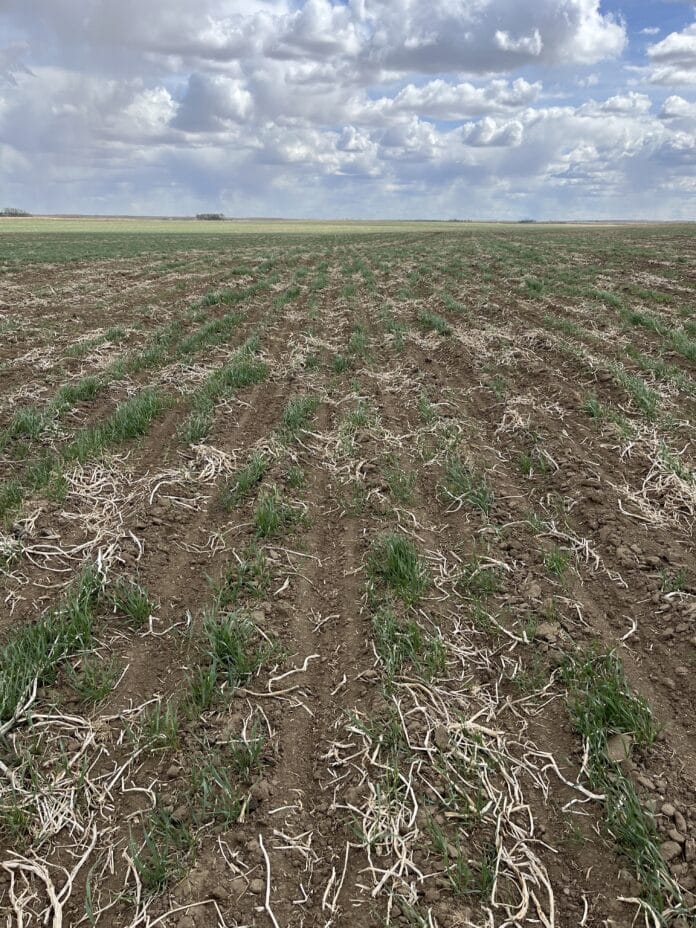We try a little bit of everything when it comes to regenerative agriculture. With our production system it makes it easier to check off the regen ag box here at SLM Spud Farms in Grassy Lake, Alta. We plant cover crops, do strip tilling or minimum tillage, cattle grazing, and manure applications. Our team is open to trying new things.
There’s still a need to be cautious before jumping into new farming practices, but for us it’s slightly easier. We have two agronomists on staff, myself and Johanna Ypma, whose family owns the farm. With two sets of boots and eyes in the field, we’re able to manage the crops a little closer and have extra time and manpower for research and trials.
Johanna and I keep an eye out for the latest technology and regen ag ideas. When we come across a production practice that looks interesting, the first step is always to talk it through and see if it’s feasible on the farm. We need to consider if it’s something we can do within the constraints of our growing season; if it works for the region and our soil type; and if we have the people and resources available to do it. There’s a lot to consider.
One of the ideas that worked out the best for us has been our strip till machine. Johanna’s father Lyle is a machine fabricator, and he comes up with a lot of good ideas. A few years ago, he built a strip till machine that has helped us immensely with water retention and reducing wind and soil erosion. In our area of southern Alberta, we need to protect the land and stop soil from blowing away.
Because of the strip till machine, we’ve improved the management practices for our corn crop that’s sold to the cattle feedlots in the area. Before digging up the potatoes in the fall we will spread a winter cereal cover crop seed on the potatoes. When we dig up the potatoes the cover crop self-seeds. We turn the irrigation pivots on, and the winter cereal grows and establishes itself. In the spring we make one pass with the strip till machine, leaving 22-inch row spacings that we then plant corn in. The cover crop holds the soil in place and protects the corn as it grows and establishes itself, stopping damage from the wind or it getting sandblasted.
Not all trials we do work out though… I like to mess around with some companion cropping and intercrops. This year we tried a couple different crop types planted together, and there’s still some serious work left to do to make those successful. We tried growing a pulse with an oilseed, as it’s good for the soil with one fixing nitrogen and the other suppressing weeds and crop disease. We realized though we need to make some adjustments with planting dates, planting rate, row spacing and crop types for compatibility. At the end of the day, there’s a lot to consider when experimenting. Regenerative ag isn’t a one size fits all deal, so it’s up to us as farm managers to sift through the noise and find what’s best for us.
As the snow starts to fall and we park the machines in the sheds, we start reviewing how the year went. Deciphering the good, the bad and the ugly from the previous year and making corrections for the following year. By January, we should have it pretty much closed in on what we want to do for the upcoming growing season. And it’s likely there will be another round of new and exciting trials to try.









